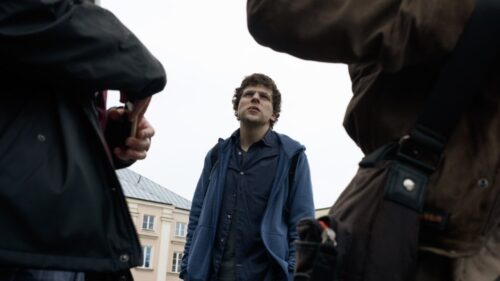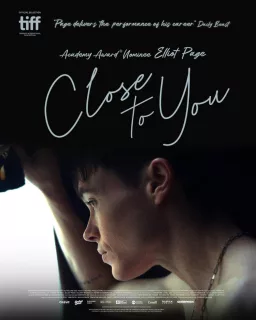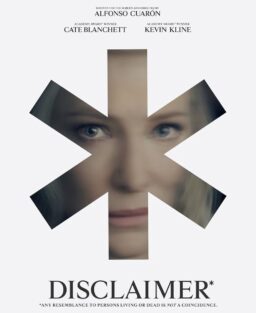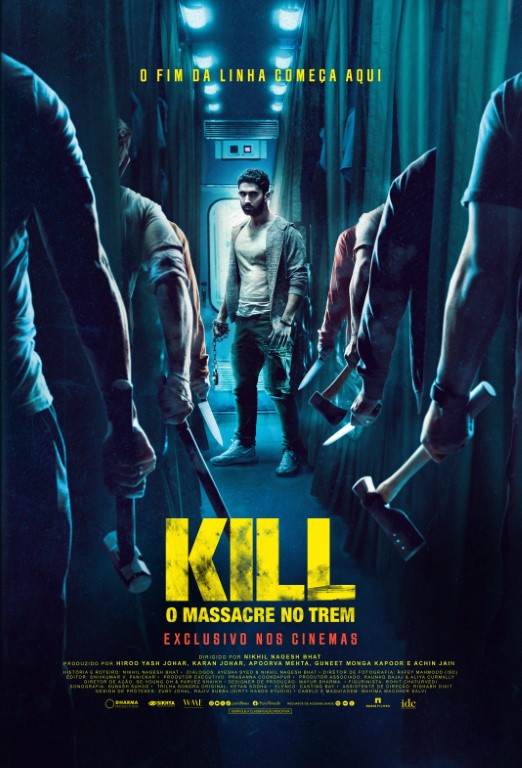Floyd Norman is a legend, but don't take my word for it. He was named in 2007 as one of the recipients of the esteemed Hall of Fame award, which was established back in 1987 by the Walt Disney Company to recognize individuals who have made an extraordinary and integral contribution of the company. The animator and story-writer started as his career as a comic book artist before moving over to Disney during the 1950's, becoming the first black animator at Disney where he worked on classics of the period such as "Sleeping Beauty," "101 Dalmatians," "The Sword in the Stone," and "The Jungle Book."
After Walt Disney's death in 1966, Norman moved on to work at other animation production companies including Filmation, and even created animation sequences for "Sesame Street." He retuned to Disney in the 1990's where he worked on "The Hunchback of Notre Dame" and "Mulan," and even to Pixar where he was involved with "Toy Story 2" and "Monsters Inc."
Now the still-active, 80-years-young Norman is one of the creators of the website Afrokids.com. He's also one of the of the Disney animators featured in the PBS/American Experience two-part, four-hour documentary on the life and career of Walt Disney, which is being broadcast this week on the network. Recently, RogerEbert.com had a chance to talk to the legend about his career, working at Disney Studios during its second golden age, as well what was it like working with "The Old Man," as Norman calls Walt Disney.
Do you consider yourself a pioneer?
Not at all [laughs]. I'm not sure of that because, I got to Disney very late, [and] so much had been done by the time I arrived. I felt as though I had missed a lot. A lot of us, when we started out in the 50's, felt that we had missed out on a golden era that was long past.
Well, let's start from the beginning. When did you first know that you had a talent for drawing?
Oh, when I was a little child; a lot of colleagues at Disney had the same experience. As a matter of fact, one of the other Disney legends once said to the effect that "all children start out as artists but as the years go by they get it beaten out of them." [Laughs] But those who stay with it become artists.
But what made you continue?
Just for the sheer love of it, the sheer passion of drawing. I just could not stop doing it. And my colleagues had the same experience as a child.

But then comes the fork in the road so to speak; why did you turn to film animation instead of becoming a painter, or even a sculptor?
Okay, so here's what happened. I was in middle school and one day. I was in the school library, and I found a book on motion pictures, and I actually fell in love with how motion pictures were made. So here I am, I have this love of art and this love of motion pictures, and so animation was the perfect blend of the two. Stories being told with artwork, stories being told on the big screen and the small screen. Animation became the perfect medium for me.
I have to assume that when you started out, and you don't have to give the details, that you faced obstacles and setbacks along the way, being the only or one of the few very black animators at that time pursuing a career in the field. What kept you going and not giving up?
Well, I have to be perfectly honest with you, and disappoint you and others because my story is not of overcoming obstacles and roadblocks that would get in my way being black. Honestly, and I hate to confess this, I had a fairly easy journey. I fell in love with a medium that I wanted to do for the rest of my life, I was determined to do that job and honestly nothing got in my way. If anything, I was encouraged by all those around me.
You were very fortunate.
But there's a caveat. I grew up in Santa Barbara which is a big, affluent community, rich with artists, writers, musicians, dancers, choreographers and composers. I grew up in an art-filled community so everyone I encountered there encouraged me, and instead of being talked out of my career and my dreams, I was encouraged to follow my dreams and that played a tremendous part in my life. I never had any discouragement, I always had everyone backing me, being on my side. So instead of a story about overcoming hardship and poverty, my path to Disney was a pretty smooth one, and I'm very grateful for that. But it wasn't a big a struggle as one can imagine. And despite the color of my skin, back during the 1950's, even that was not a barrier.
So you can say that you were truly a creation of your environment. Would you be able to say that same thing if you were from say Memphis, or Baton Rouge, or even Chicago?
No, probably not. You're very right about that. Had I been born in Alabama, Georgia or Mississippi, it would have been much much more difficult. My parents were originally from Natchez, Mississippi and the fact that they left there and moved to Santa Barbara played a very big part in my life and my path. So, yes, growing up there gave me a huge advantage, and it made things a whole lot easier. It would have been much different if I had had been born in the Midwest or the Deep South.
So, now you're at Disney, and working on some legendary classic films as "Sleeping Beauty" and "101 Dalmatians." Weren't you somewhat intimidated working at a place with such a major historical and cultural legacy?
[Laughs] Well, you know I certainly was well aware of the Disney legacy, no doubt about that. I knew where I was, and I had the opportunity to work with the men and women who made the films that I saw as a child. I was well aware of the incredible talent that surrounded me. Intimidated? To a degree. But not a whole lot, because those Disney masters were very gracious in sharing their knowledge, their experience. They taught us kids, they invited us into their offices taught us and mentored us and I'm still very grateful for that. And that's why I do my best to help kids today, because the Disney old-timers certainly gave of their time to all of us young kids starting out back in the 1950's. So yeah, we were aware of the Disney legacy. We were aware of this amazing place where we had the opportunity to work. And at times, it was definitely intimidating, especially when you were in [a] meeting with Walt Disney himself. Boy oh boy, you can bet that was intimidating.
I was just about to bring him up next. He's a true icon, someone who totally transformed entertainment still to this day. When you hear the word Disney it has definition and a meaning.
Oh yeah, you bet [laughs].

So he comes into the room while you're working, larger than life. What do you do? He oversaw everything that went on at that studio. Nothing went past him until it met with his standards with his personal seal of approval.
[Laughs] Very true. And as you can imagine, all of us, especially us kids at the time, had such a great deal of respect for Walt Disney. And keep in mind that his peers, those men and women who worked for him back in the 30's at the old original studio on Hyperion Street, they saw Walt as one of them. They were all kids together back during the 1930's, so they weren't nearly as intimidated as all of us youngsters who were making our first baby steps into the business. So with them, there could a great deal of talking back and disagreeing with him, expressing their opinions, and not necessarily going along with Walt. While we were almost afraid to speak, lest we say the wrong thing. It was different relationship. But when people ask me, "Were you friends with Walt Disney?" I tell them, "Look, it would have been like hanging out with my grandfather's friends" [laughs]. I was a kid and everyone else was an older gentlemen who had been doing this job for many, many years. So, just being in a meeting with him was a privilege, but we didn't hang out together. We just tried to behave ourselves at a meeting and hoped to come out unscathed [laughs].
I'm dating myself here, but as a very young kid I remember watching "The Wonderful World of Disney" every Sunday night, and he always came off to me as the nicest guy on the planet. He was so likable, like someone's favorite relative or uncle, which is what they used to call him, Uncle Walt. But the thing about it was that he was a genius of the image. He knew how to play to the camera, and how to present himself and his image of this very lovable, kindly gentleman who was interested in everything.
Yeah, he was very well aware of his image. I must say, and I have to remind people of this, that in Hollywood where you get a lot of phoney-baloney celebrities, where they have this public image and the real person who is not so nice, I have to remind people that the Walt Disney that you saw on screen was pretty much the same Walt Disney who you spoke to in the hallway. There really wasn't that big a difference. He could be very charming and gracious, and just a really nice person to talk to. Now, this doesn't mean that he couldn't be a tough boss, because he was. He expected a job to be done right, and if you failed to deliver he could come down on you like a ton of bricks [laughs]. I saw that happen a many number of times. Thankfully, it never happened to me, because I did everything he said [laughs].
You left Disney after he passed away in 1966, and went on to do other things, such as working for other animation production companies, and even forming your own production company. But you eventually came back to Disney, and eventually worked for Pixar, but as a writer.
It was something very unusual, but in a sense it wasn't all that different because I had already been writing on films such as "The Jungle Book" back in 1966, when I was part of Disney's story team. But I never thought of myself seriously as a writer. But in the 1980's, the publication department called me, and told me that they wanted to bring me back in, but this time as a writer, and I admit that took me as a surprise. I was always saw myself as a Disney artist. But once I came into Disney Publishing and I began to write, I found writing very comfortable, very liberating and I wrote a bunch of stuff over a ten-year period. I enjoyed doing it because it was a break from motion pictures. And because books are not as expensive as motion pictures, the bosses tend to leave you alone. On a feature film, you have executives looking over your shoulder all the time because a film is a considerable investment, but when it came to publishing, the investment wasn't that huge. They left me alone and let me write whatever I wanted to write. Of course it had to fit within the Disney canon, but I knew those characters inside and out. I had a great time doing it for ten years until I returned to feature animation in 1993 to work on "The Hunchback of Notre Dame."
And what was the biggest difference you noticed when you came back to animation?
The biggest difference I immediately noticed was that everybody was young [laughs]. In fact, one of my directors on "Hunchback of Notre Dame," Gary Trousadle, who also directed "The Beauty and the Beast," he was a kid who I had hired some years earlier. That shows you how things had changed. Now my boss was once some kid I had hired back during the early 80's, after he had just graduated from Cal Arts.
Don't you hate when that happens?
Yeah right, but that's what happens in life as you get older; new kids come in, and it continues to this day. Now those kids are old veterans, and a new crop of kids are coming in out of school, so the cycle continues.
And one last question: What makes a great animated film? There's been a huge explosion of animated feature films since the 80's, and there are more coming out soon with even more in development, but only a few of them will be considered true classics.
Oh yeah, it was the same way when I was at Pixar in 1997, working on "Toy Story 2" and "Monsters Inc." They had the same thing that Disney had—the ability to tell a story that reaches out and touches everybody. A successful animated film must have not only entertainment, but it has to have heart, it has to have a emotional resonance when people sit down, and it doesn't matter whether you're 5 years old or 55 years old or 85 years old, the picture touches you. It speaks to you, it makes you laugh, it makes you cry and that's what the Old Man, Walt Disney, taught us that you have to connect with the audience. If the audience doesn't have that connection, then you're hopeless. And that's why Walt focused so much on characters that you got to know, that you get to love. The characters in your film are everything because if you don't like those characters then you're not going to go on your journey with them; you're not going to be involved in their story. And because you care about them, everything and anything that happens to them affects you.
"American Experience: Walt Disney" airs on PBS this week, with Part I premiering on Monday, September 14th, and Part II on Tuesday, September 15th, both at 8pm CST.












